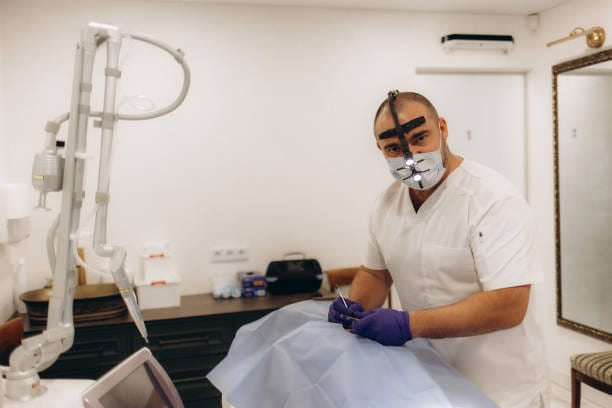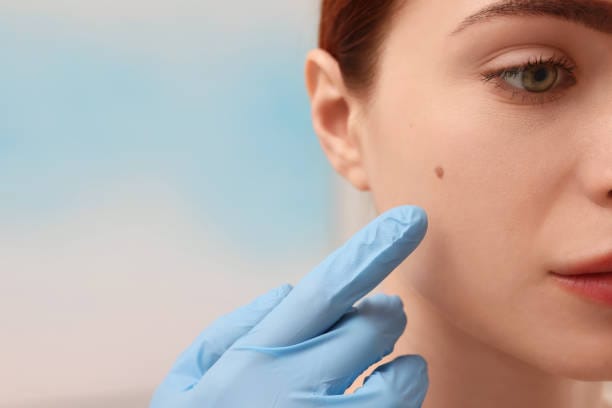Preventing Skin Tags After Removal Treatment | Revitalise London

Skin tags are small, soft growths that occur most often in areas where skin rubs against skin or clothing — but with the right care, preventing skin tags is possible They are not harmful, but many prefer to have them removed for cosmetic purposes or to stop the irritation. Even after removal, skin tags can return, and if not taken care of, such as removing the cause, they can return.
After removal, skin tags can be prevented with proper skin care, lifestyle changes, and awareness of possible triggers. Reducing friction, keeping the skin clean and dry, maintaining a healthy weight, and managing hormonal change can all help to minimise their recurrence. Skin-friendly products and a balanced diet also help overall skin health and decrease the chances of new growths.
After removal, this guide will cover the best practices to prevent skin tags. These are the simple yet effective steps you can take to keep your skin smooth and healthy with the skin tags not coming back.
Keep the Skin Clean and Dry
Proper skin hygiene is essential after the removal for preventing skin tags. By keeping the skin clean and dry, you can prevent the buildup of bacteria, sweat, and oils that can lead to irritation and friction, two of the biggest causes of skin tag development.
Begin by washing the affected area daily with a gentle, fragrance-free cleanser. Avoid harsh soaps or exfoliators, which can irritate the skin. Pat the skin dry with a soft towel after cleansing; rubbing the skin too hard could create new growths.
Moisturising is also important, but go with a lightweight, noncomedogenic moisturiser to avoid clogging the pores. Applying mild talc-free powder, especially in areas that sweat, like the neck, underarm, and groin, can help absorb excess moisture and reduce friction.
In addition, wearing breathable, loose-fitting clothes made of natural fabrics such as cotton will also help keep your skin dry. Do not wear tight clothes that are too tight to rub against the skin, as repeatedly rubbing the skin can cause new skin tags to develop over time.
Additionally, if you work out physically or if you live in hot climates, pay attention to the sweat accumulating. After a workout, change into dry clothes and shower soon afterward to prevent irritation. Keeping your skin constantly clean and dry will dramatically reduce the chances of getting new skin tags.
Understanding Why Skin Tags Return
Skin tags pop up out of nowhere, but certain factors cause them to regrow after removal. Removing a skin tag removes the current growth but doesn’t prevent future growths. Knowing why skin tags come back can help prevent their return.
1. Friction and Skin Rubbing
Continuous friction between skin folds or touching clothing is one of the leading causes of skin tags. Skin tags are more prone to developing in areas such as the neck, underarms, groin, and eyelids. Once the skin tags are removed, if these areas continue to have friction, new skin tags may develop over time.
Skin tags most often develop in places where the skin rubs against skin or clothing. Skin irritation from constant friction may cause new tags to develop.
2. Genetic Predisposition
Some people are prone to developing skin tags because of their genetic makeup. If your family members tend to get skin tags again and again, you’ve a higher chance of getting them again after removal.
3. Hormonal Changes
It will help to know that skin tag formation is often brought on by hormonal changes, most notably pregnancy, menopause and conditions such as diabetes. They also grow with high blood sugar levels and insulin resistance, which make people with diabetes more likely to have.
A skin tag is more likely to occur if you have hormonal imbalances, which happens during pregnancy, menopause, and with conditions that affect a woman’s reproductive system, such as polycystic ovary syndrome (PCOS).
4. Obesity and Excess Skin Folds
Weight gain causes skin folds and friction, which is ideal for skin tags to form. These develop in overweight or obese people because the skin rubs in these areas frequently.
Skin tags are more likely to develop among obese people or those with insulin resistance (a condition that includes type 2 diabetes). These benign skin formations may grow because high blood sugar levels and metabolic changes can stimulate their growth.
5. Skin Care Habits
Skin tag formation may occur when using harsh skincare products, applying too much moisturiser, or not drying the skin. These small growths can occur on skin that’s still moist or irritated.
Learn to identify and eliminate these factors, and you can significantly reduce your chances of skin tags returning after removal.
6. Aging
As we age, we are more prone to skin tag growths. With time, the skin may become increasingly prone to reduced elasticity and collagen breakdown.
Finding out what causes skin tags to form will help you take preventative measures to prevent them from recurring after they are removed. The following section includes some helpful skincare tips to avoid recurrence.
Daily Skincare Routine For Preventing Skin Tags

Proper hygiene after removal is essential to prevent the development of skin tags. Dry skin can reduce the risk of irritation, infections, and excess friction that cause skin tags to form.
Gently wash with a soapy cleanser: Dampen your face with water and use a gentle soapy cleanser to clean your skin gently every day. Avoid dish soap and harsh chemicals that can be irritating.
- Don’t rub; pat dry. Avoid rubbing your skin dry with a towel after washing; instead, pat dry with a soft towel. Friction, such as rubbing, can also increase the chance of new skin tags.
- Moisturise wisely: Go for a hydrating moisturiser that is light, non-greasy and does not have a high friction.
Control Excess Moisture
However, since certain areas are more prone to moisture buildup, such as the neck, underarms and groin, they are more prone to friction and irritation. To keep these areas dry:
Apply talcum or cornstarch powder: Using powder in high friction areas will help absorb sweat and prevent chafing.
Choose loose-fitting, cotton-based clothes, as they will reduce sweat buildup. Avoid tight or synthetic fabrics, which will trap moisture.
Wear different clothes: If you sweat a lot, it could be a good idea to change clothes now and then so that any moisture that has accumulated on the skin won’t last long.
Avoid Irritants
Avoid harmful skincare: Do not apply toners that contain alcohol, extremely fragrant creams, or hard exfoliants. These irritate the skin and may cause it to grow in unnecessary ways, promoting the occurrence of new skin tags.
Go for hypoallergenic products: It is better to pick skin-friendly products that will not cause irritation or allergic reactions.
When your skin remains clean and dry, you decrease the risk of skin tags coming back after removal and have long-lasting, smooth and healthy skin.
Keep Your Skin Clean and Dry
After skin tags are removed, it is essential to keep the skin clean and dry. Friction and irritation can create an environment for moisture and dirt to form, which can encourage new skin tag formation.
Daily Cleansing Routine
Secondly, do not use a harsh cleanser on the treated area, and wash twice a day with a gentle cleanser. Harsh soaps can strip the skin of its natural oils, leaving it dry and irritated.
Instead of hot water, pick lukewarm water, as hot water can harm the skin barrier.
Instead of rubbing it dry, pat it dry with a soft towel, without rubbing, because rubbing will irritate the spot.
Preventing Excess Moisture
Powder or cornstarch should be applied to areas prone to friction, i.e., underarms and under the neck.
Wearing breathable fabrics such as cotton will help you avoid sweating.
Wear clothes regularly after workout or sweating.
Hydration vs. Over-Moisturising
Continue using a lightweight and non comedogenic moisturiser to keep the skin hydrated without obstructing skin pores.
Do not use heavy creams or oils in skin folds, as these tend to trap moisture and cause friction.
Proper hygiene and dryness reduce the chances of skin tag recurrence. Maintaining clear skin comes down to these simple habits, when followed repeatedly.
Avoid Skin Friction and Irritation
Skin tags are mainly caused by friction and irritation. If the mole is removed, you can protect your skin from the rubbing that can cause new moles to form.
Wear Loose-Fitting Clothes
The constant friction also comes from tight clothing, such as around the neck, underarms, and thighs.
To avoid getting irritated, choose soft fabrics to breathe, like cotton or moisture-wicking fabric
Minimise Jewelry Irritation
They can rub against your skin and cause irritation, which could lead to the formation of skin tags.
Keep jewelry lightweight and hypoallergenic if you wear them to avoid excessive friction.
Be Gentle with Your Skin
Do not excessively scratch or rub the treated area. Aloe vera gel can soothe irritation; if it feels itchy, use a cold compress.
Instead of rubbing vigorously with hard towels, pat the skin dry with soft towels.
Reduces shaving Irritation
However, if you shave areas susceptible to skin tags (neck and underarms, for example), use a sharp razor and shaving cream to avoid irritation.
Waxing or laser hair removal can be gentler alternatives if friction is an issue in an area.
The friction that occurs can be significantly reduced to prevent skin tag regrowth. Simple changes in your daily lifestyle, such as wearing the proper clothing and being aware of daily habits, can keep your skin smooth and free of irritation.
Lifestyle Changes to Reduce the Risk of Skin Tags
After removal, lifestyle adjustments can be significant as these can lower the chances of developing new skin tags. Genetics plays a role, but some habits and environmental factors also help.
Maintain a Healthy Weight
Excess weight causes skin folds and friction, which makes it easier for skin tags to develop. A balanced diet and regular exercise help maintain a healthy weight and, therefore, reduce unnecessary skin friction.
Choose Loose-Fitting Clothing
Constant rubbing of the skin caused by tight clothing can trigger the development of skin tags. Breathable and loose-fitting clothes help minimise irritation and allow the skin to be dry and comfortable.
Improves insulin Sensitivity
Skin tags tend to occur among people with insulin resistance or diabetes. Blood sugar levels can be managed through a healthy diet, exercise, and proper medical care. For instance, one can avoid high-sugar foods and have more fibre, lean proteins, and healthy fats to support insulin regulation.
Reduces skin Irritation
Skin tags can form from constant friction, shaving and jewellery rubbing against the skin. To prevent irritated, dry skin, one should use gentle skincare products, apply them gently, and keep the skin hydrated.
Eat nutrient-rich food and stay hydrated
A diet rich in vitamins and antioxidants and good hydration help to have healthy skin. The nutrients vitamin E, zinc, and omega-3 fatty acids help your skin heal and repair itself and help decrease abnormal growths.
With such a skin-friendly environment, you can decrease your chances of skin tag recurrence. Skincare, healthy living, and medical precautions are all introduced in a holistic approach that helps skin last longer after extraction.
Avoid Excessive Jewelry and Accessories
Skin tags can arise from constant friction against the skin caused by wearing tight or heavy jewelry and accessories. This is most common with necklaces, bracelets and earrings that rub against sensitive areas on the neck, wrists or earlobes.
Choose Hypoallergenic, Lightweight Jewelry
Lightweight and hypoallergenic jewelry can be opted for. In fact, some materials used in surgical grade stainless steel, titanium, or some types of plastic are less likely to cause an allergic reaction and decrease the risk of skin tag formation.
Avoid Tight-Fitting Accessories
Tight accessories can cause continuous pressure and rubbing on the skin. Unnecessary friction is prevented by selecting looser-fitting items or adjusting the fit. For example, if necklaces are chosen with adjustable lengths, they will not be too tight around the neck.
Limit Prolonged Wear
Reducing the duration of jewellery wear, especially when jewellery is worn during activities associated with excessive movement or sweating, can reduce skin irritation. Moving accessories out of the way prior to exercise or sleep aids the skin's breathing and healing, making the development of skin tags less likely.
Wearing jewelry and accessories mindfully and being aware of how they engage with the skin will reduce your chances of getting new skin tags after removal treatments.
Why Choose Revitalise London for Removal & Preventing Skin Tags?
Revitalise London offers safe and effective skin tag removal. We are an advanced skin clinic that offers our patients smooth, clear skin free from unwanted growths.
From laser therapy to cryotherapy to electrocautery, we employ various forms of removal that are quick, precise, and gentle, all in order to be an actual expert technique. In line with this, our highly trained professionals will examine your skin type and condition to suggest the best course of action, decreasing the likelihood of irritation or scarring.
At Revitalise London, we go beyond removing skin tags; we focus on skin health long-term, too. Preventing regrowth is one reason we give our post-treatment care advice. Sterile procedures, together with state-of-the-art technology, are also used to focus on your safety and comfort.
Revitalise London is an ideal place for professional skin tag removal. Our clinic environment is welcoming, and we have a good track record for excellence. Contact us today for your consultation, go ahead and book an appointment, and give us the chance to help you become a beautiful person by successfully treating your poor skin.
Preventing Skin Tags Conclusion
After the removal of skin tags, it is essential to prevent skin tags so that your skin remains smooth and healthy. Skin tags are removed, but new ones can form unless the causes of the problem are addressed. Reducing excess moisture on the skin can be achieved by keeping it clean and dry. Loose, breathable clothing also helps to prevent friction, particularly in areas that may rub.
A healthy lifestyle is essential to maintaining skin health. This helps reduce skin folds and friction, reducing the risk of skin tags. It can also help prevent the recurrence of skin tags, as they are formed through insulin resistance. Exfoliation in regular skincare routines can also remove the buildups that can result in skin tags.
Professional treatments and expert advice are needed for long-term results. We offer advanced skin tag removal with excellent aftercare so that your skin stays healthy and smooth. With the help of our team, you will be able to prevent any further skin issues with a tailor-made skincare solution. Consultation is now available. We offer refreshing, straightforward, tag-free skin!
